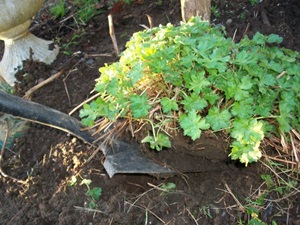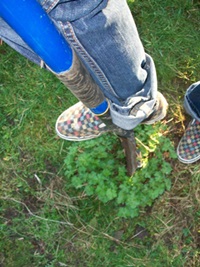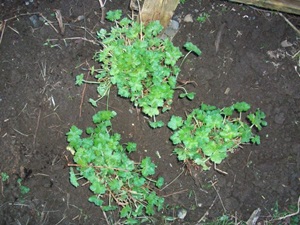
Now with the title of this post I may have conjured up suppressed fears and a deep hatred of maths. But for gardeners dividing means something entirely enjoyable to. For me anyway this is one of my favourite spring jobs to do in the garden.
Now obviously with our lovely spell of snow and cold weather that we have had in the past few days division should be put off until the threat of frost and snow is over.
Division in the garden refers to the splitting of herbaceous plants. This is a fantastic means of increasing the amount of one plant, which is doing very well or one that you simply like more, in a garden. The process is incredibly simple and one which should not be feared. Some gardeners get turned off dividing as it can be seen as a very barbaric process to carry out on the plants you have lovingly grown for over a year or more.

However the benefits far out weight the fear factor in my eyes. Firstly it is a free means of getting more plants. Either you buy the original plants yourself and split them in coming years or ,if you have some gardening friends you simply take some of their plants and it is totally free then. I would recommend asking the gardeners permission first though! The other main benefit is that you tend to get much better flowers when you split plants. This is especially true with Agapanthus which needs to be split every three to four years to encourage flowering.

On numerous occasions I have recommended investing in a straight edge spade. This is one of the jobs where a straight edged spade comes in very handy. If you ever try dividing with anything else you will soon learn just how much a straight edged spade will make your life easier.
When it comes to dividing herbaceous plants you want to wait until the plants are just starting to grow again (over the next couple of weeks) and when the ground has dried out enough to work on it. One you have these conditions all you have to do is simply dig up the plant, maintaining as much of the root system as possible. Move the plant to a level surface and then forcefully drive the spade through the plant. Repeat this on both halves until you are left with four plants. Then replant one where you just dug the original plant from and the rest can be planted in empty spots in the flowerbed.

It is vital that for the first month or so after splitting you give the plants a bit of extra tlc and ensure they do not try out in warm weather. You should keep an eye on them until they have established new roots and are able to look after themselves.

My Name is David Corscadden and I have just finished my degree in horticulture from UCD. I have a keen interest in wildlife friendly gardens or as I like to call them “Wild Gardens”. I have in the last year taken a u-turn in what I thought I would do after college. I have moved more in to the literature side of horticulture and plan to do a masters in journalism next year.
Source: Beyond Wild Garden – Time To Divide – David Corscadden





